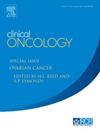2012-2016年英国III期结肠癌患者治疗中的年龄特异性社会经济不平等:一项基于人群的研究与中介分析
IF 3.2
3区 医学
Q2 ONCOLOGY
引用次数: 0
摘要
目的:目前尚不清楚在英国III期结肠癌患者中是否存在指南推荐治疗的不平等,以及是否存在年龄差异。材料和方法使用2012年至2016年英国癌症登记处的数据,我们纳入了所有III期结肠癌患者,并应用多变量多项逻辑回归,包括年龄和剥夺之间的相互作用,以调查接受nice推荐的治疗-手术联合辅助化疗的年龄特异性社会经济不平等。我们还研究了肿瘤因素对治疗不平等的中介作用。结果在纳入的20,368例患者中,接受nice推荐治疗的社会经济不平等现象在所有年龄段都存在,但在65至85岁的患者中更为普遍。对于一名70岁的患者,接受nice推荐的治疗的概率在最少的五分位数中为70.8% (95% CI: 68.6, 73.1),而在最贫困的五分位数中为59.4%(53.7,65.1)。当两组都不太可能接受nice推荐的治疗(85岁以上)时,来自贫困地区的患者更有可能接受手术等替代治疗,而那些背景最贫困的患者则没有接受任何治疗。肿瘤因素几乎不能解释接受手术或辅助化疗的不平等。结论贫困地区的患者往往接受较差的治疗方案,肿瘤因素对这种不平等的解释很小。指南需要确保nice推荐的治疗方式适用于所有人,以缩小生存差距。本文章由计算机程序翻译,如有差异,请以英文原文为准。
Age-Specific Socioeconomic Inequalities in Treatment in Patients with Stage III Colon Cancer in England 2012–2016: A Population-Based Study with Mediation Analysis
Aims
It is unclear whether inequalities in guidelines-recommended treatment among patients with stage III colon cancer existed and differed by age in England.
Materials and methods
Using data from cancer registry in England between 2012 and 2016, we included all patients with stage III colon cancer and applied multivariable multinominal logistic regression, including an interaction between age and deprivation, to investigate age-specific socioeconomic inequalities in receipt of the NICE-recommend treatment – surgery combined with adjuvant chemotherapy. We also examined the mediating roles of tumour factors on the inequalities in treatment.
Results
Among 20,368 included patients, socioeconomic inequalities in receipt of the NICE-recommend treatment were observed at all ages but wider in patients aged between 65 and 85 years old. For a 70-year-old patient, the probability of receiving the NICE-recommend treatment was 70.8% (95% CI: 68.6, 73.1) for the least vs. 59.4% (53.7, 65.1) for the most deprived quintile. When both groups were unlikely to receive the NICE-recommended treatment (85+ years old), patients from less deprived areas had a higher probability of receiving some alternative treatments like surgery while those with the most deprived backgrounds received none. Tumour factors explained little of inequalities in receipt of surgery or adjuvant chemotherapy.
Conclusion
Patients from deprived areas tended to receive inferior treatment options, and tumour factors explained little of these inequalities. Guidelines need to ensure that the NICE-recommended treatment modality is available to all to reduce the survival gap.
求助全文
通过发布文献求助,成功后即可免费获取论文全文。
去求助
来源期刊

Clinical oncology
医学-肿瘤学
CiteScore
5.20
自引率
8.80%
发文量
332
审稿时长
40 days
期刊介绍:
Clinical Oncology is an International cancer journal covering all aspects of the clinical management of cancer patients, reflecting a multidisciplinary approach to therapy. Papers, editorials and reviews are published on all types of malignant disease embracing, pathology, diagnosis and treatment, including radiotherapy, chemotherapy, surgery, combined modality treatment and palliative care. Research and review papers covering epidemiology, radiobiology, radiation physics, tumour biology, and immunology are also published, together with letters to the editor, case reports and book reviews.
 求助内容:
求助内容: 应助结果提醒方式:
应助结果提醒方式:


